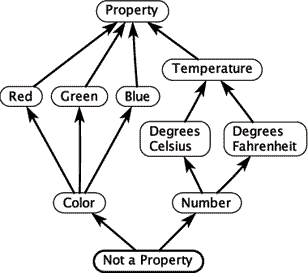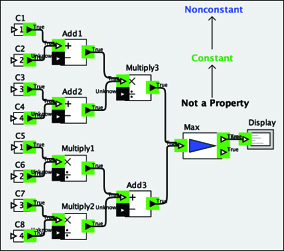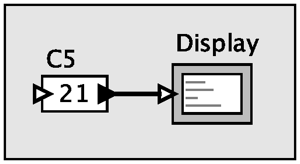

 |  |
|
|
Ptolemy Hierarchical Orthogonal Multi-Attribute Solver (PtHOMAS)DownloadPtHOMAS is part of the Ptolemy II project. Users can try out the software and see the source code by downloading a nightly build. See the ptexternal page for access. PtHOMAS code is referred to asOntologies within vergil
and the source code is located in $PTII/ptolemy/data/ontologies.
AboutPtolemy Hierarchical Orthogonal Multi-Attribute Solver (PtHOMAS) is a collaborative project with CHESS partner Bosch through the Bosch Research and Technology Center with additional funding from the Army Research Office in connection with the OSD Software-Intensive Systems Producibility Initiative. This project also has applications in the NAOMI collaboration with CHESS partner Lockheed-Martin.This project is focused on enhancing model-based design techniques with the ability to include in models semantic information about data (what the data means), to check consistency in the usage of data across models, and to optimize models based on inferences made about the meaning of the data. The approach is to build on classical data type systems, which address this problem up to a point. It is easy to check, for example, whether two models agree that a variable represents an integer value. But additional meaning like the units and the semantic interpretation of the data is not captured in the type system. An organization of such meaning is referred to in computer science as a data ontology. 
In classical type systems, the relationship between types form a partial order, or more specifically, a mathematical lattice, as shown above for small subset of a typical type system. Type checking and type inference algorithms are based on efficient algorithms for solving systems of inequalities over such partial orders.

A data ontology can be similarly constructed as a lattice, as shown in the example above. In this example, each node in the ontology specifies an interpretation of a piece of data and the relations between nodes indicate "is a" relationships between these interpretations. In the PtHOMAS project, we associate such ontologies with models and apply consistency checks, inference algorithms, and model optimizations based on the results of the inference.

The above Ptolemy II model, for example, has a simple 3-element lattice associated with it (NotAProperty -> Const -> Nonconstant), and based on inference results, can be automatically transformed to the much simpler model shown below. 
Publications
Mailing lists and discussion forums may be found under the pthomas link above. |